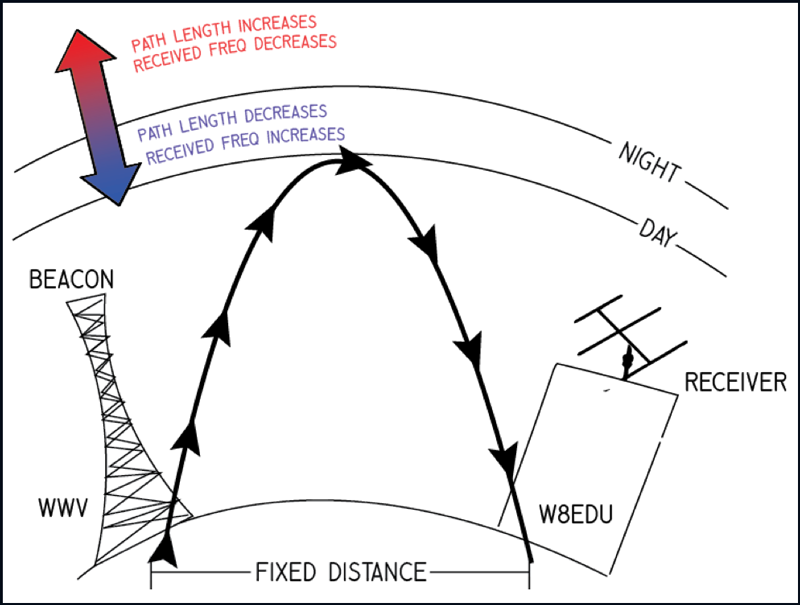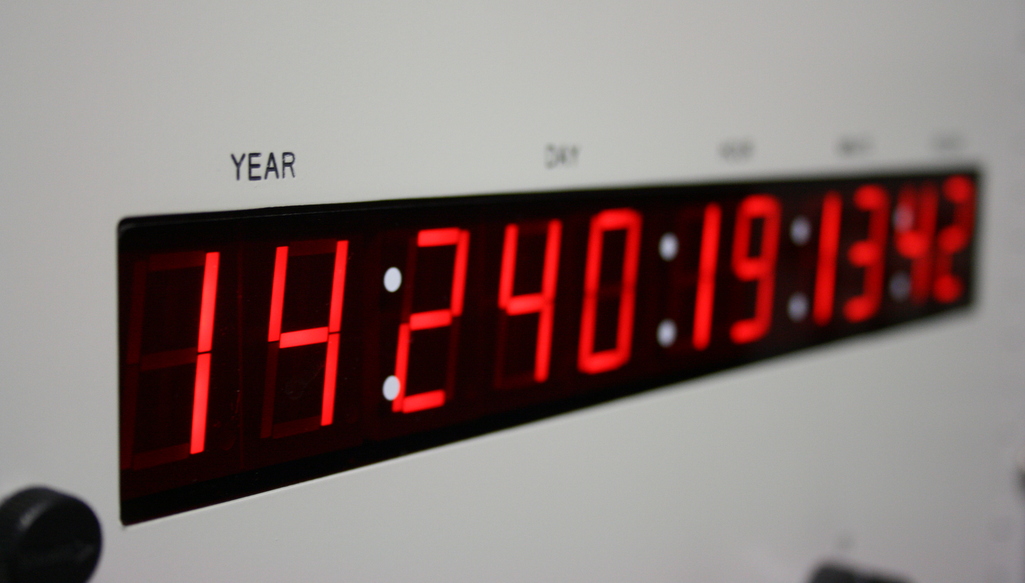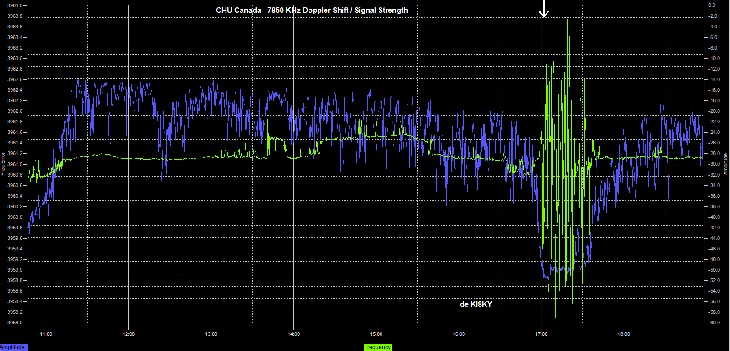Many thanks to SWLing Post contributors, Troy Riedel and Jock Elliott, for sharing the following post from Spaceweather.com:
A NEW WAY TO DETECT SOLAR FLARES: Around the world, ham radio operators are experimenting with a new way to detect solar flares–the Doppler Shift method. Brian Curtis of Sault Ste Marie, Michigan, demonstrated the technique on June 20th when the sun produced a powerful X1.1-class solar flare:
“I monitor the frequency and field strength of Canada’s CHU time station transmitting at 7850 KHz,” explains Curtis. “During the X-class flare event, I was able to detect the Doppler shift of the station’s carrier frequency (green plot). It shifted by 5 Hz, which is a small change, but very obvious!”
When radiation from a solar flare hits Earth’s atmosphere, it ionizes the air, temporarily boosting the thickness of our planet’s ionosphere. Any radio station skipping off the ionosphere will suddenly find its frequency Doppler shifted (because its reflection point is moving). Shortwave stations such as WWV, WWVH, and CHU transmit carriers with atomic-clock grade frequency stability, so they are perfect sources for Doppler monitoring.

Sudden changes in the ionosphere caused by flares or even sunrise/sunset can Doppler shift the frequency of stations like WWV. Image credit: Collins et al (2021) [Original image via HamSci and SpaceWeather.com]
“I have been monitoring radio stations for decades, noting sudden changes in signal strength as a means of monitoring space weather events,” says Curtis. “It is only fairly recently (~4 months) that I started to experiment with monitoring the Doppler shift of HF stations. The June 20th X-class flare event is by far the most dramatic that I have witnessed thus far.”
Would you like to detect solar flares this way? The HamSCI citizen science program has developed a Personal Space Weather Station specifically for Doppler shift measurements. This technique can also be used to study solar eclipses, earthquakes and tsunamis, and much more.
Click here to read the full story on Spaceweather.com, more on EOS.org and HamSCI.org.



Doppler shifts as well as ionospheric heights are still being measured live
https://www.sws.bom.gov.au/Category/Solar/Learmonth%20Observatory/Overview/lear.pdf which is in the North West of Western Australia
https://gong.nso.edu/ contains the location of other measurement sites around the world.
Ihttps://www.sws.bom.gov.au/HF_Systems/6/1 is of interest with respect to receiver signal levels
I was in the special services in the 1960s, and we used phase-shift monitoring techniques (doppler) to detect various anomalies affecting the ionosphere. One of the stations used was GBR at Rugby, UK, transmitting at 16 kHz, others in Japan. One such “anomaly” might be a rocket booster traveling through the ionosphere along or through the path of the received signal, altering the phase of the received signal. You might guess what another atmospheric disturbance might be in the 1960s… Phase shifts were recorded 24/7 on drum helicorders (those drums and pens you see recording earthquakes).
This is fascinating stuff.
More on the Rugby station:
https://www.radioheritage.com/story443/
For the technically inclined:
https://www.masterclock.com/cmss_files/attachmentlibrary/Archived-papers/The-Correlation-of-VLF-Propagation-Variations-with-Atmospheric-Planetary-Scale-Waves-1973.pdf
Bill WE7W
https://radio-timetraveller.blogspot.com
I am guessing that having your signal strength taking a 30 dB dump is what caused the receiver to not lock on to the transmitting frequency. The frequency measurement is low quality with such a weak signal during that 45-minute period.
Troy,
Thanks.
The Doppler effect is best demonstrated by siren from a passing emergency vehicle. The pitch increases as the vehicle is coming towards you, is its original frequency when it is in front of you and decreases when is is moving away. The frequency shift is determined by the speed of approach or departing. The theory is that the waves are compressed when the vehicle is approaching and expanded as it moves away.
This matches your varying path lengths in your explanation above.
Lastly I congratulate all the researchers for doing real citizen science, like in the beginning of radio,
The advantage of this approach is a little like the difference between AM and FM. Frequency modulation detects frequency shifts from the centre frequency and provided the signal is strong enough provides a noise free result. Amplitude Modulation would have to use the weakening of the signal the further it travels. The result is subject to noise making detection harder.
Mildly interested, but not related to the data shown in the chart. A frequency change of 5 Hz at 7.8 MHz is negligible as far as a Doppler shift. The data shown is illustrating loss of signal and the author’s receiver is not able to lock on to the incoming signal during that blackout.